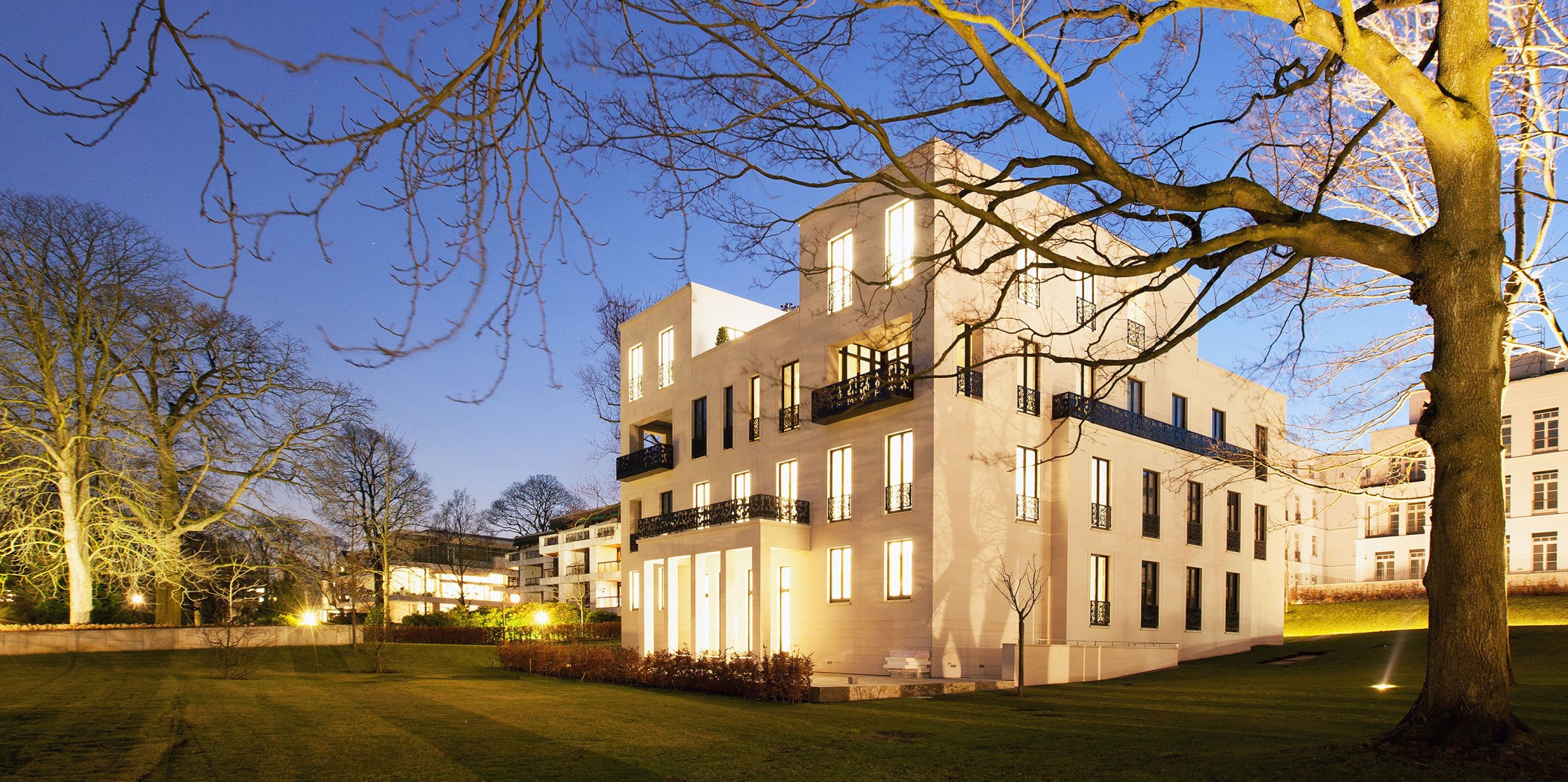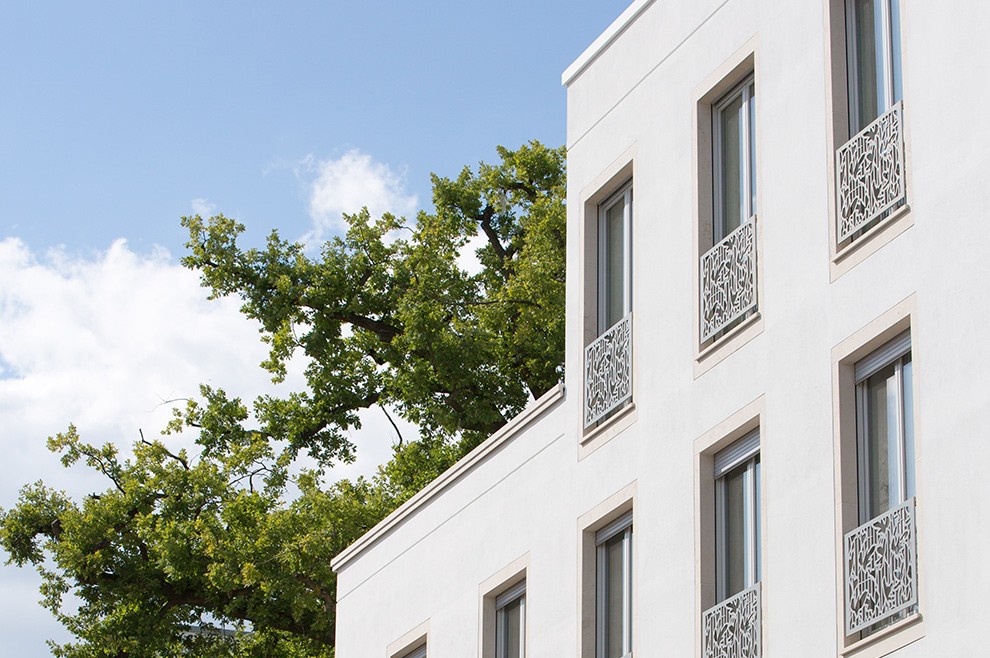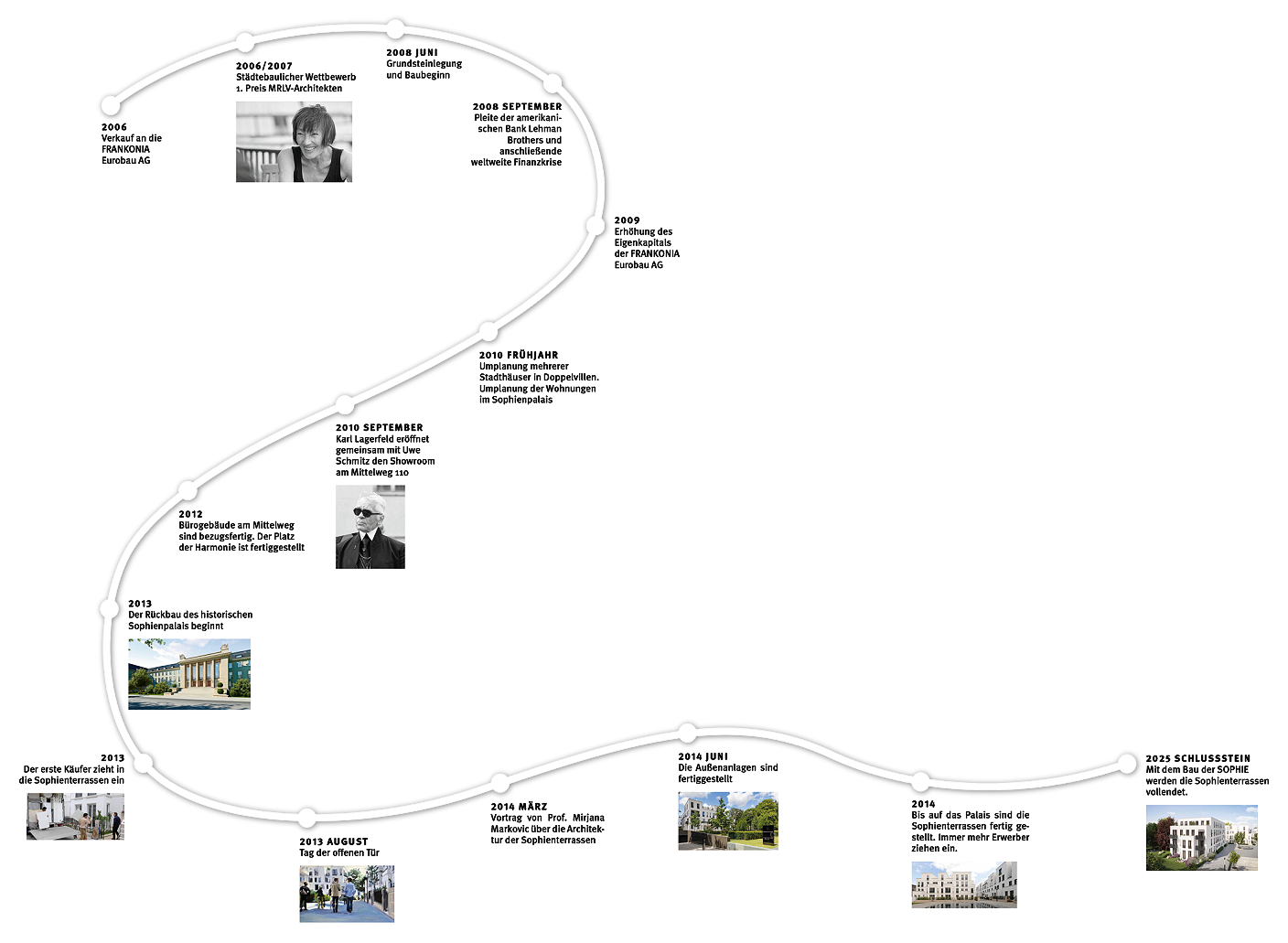History of the Sophienterrassen
A very special piece of Hamburg from the very beginning
The history of the Sophienterrassen is closely linked to the historical development of Hamburg in general and Harvestehude in particular. Initially, there was only the Harvestehude monastery just outside the gates of the city of Hamburg from 1293. In 1530, the city took over the former monastery estate, and in 1860 it was sold to a consortium that developed it with roads as planned.
In the same year, a merchant by the name of Julius Friedrich Wilhelm Reimers, who, like other so-called ‘moneybags’, had made a fortune in overseas trade, purchased a huge plot of land between Mittelweg and Harvestehuder Weg. Consul Reimers had Villa Sophia built there in honour of his wife Sophie. It was a palace-like building with battlements in the historicist style, and he also named the private road to it after her: Sophienterrasse.
rebirth and refinement
From military site to upmarket neighbourhood
In 1935, the German army took over part of the property and erected a monumental, three-winged building to house the General Command of Military District X. Villa Sophie was occupied by the commanding general and demolished after the war. The former military headquarters was initially used by the British military and then by the Bundeswehr in the post-war period.
Until, in 2006, FRANKONIA Eurobau was finally able to purchase the entire area. From the beginning, it was clear that only a unique urban quarter could be built at this location, given its history. The splendour of the Gründerzeit and the lifestyle of the merchants of the time were to be revived in a modern form and led into a new era.
The history of the Sophienterrassen
A district that continues traditions
From the outset, the development of the Sophienterrassen was characterised by a clear vision: to create an urban district that both respects the historical significance of the location and offers modern living comfort.
An urban planning competition was therefore launched to find the best designs for the new district. The selected architects and landscape planners combined traditional Hamburg architectural styles with contemporary aesthetics to create a harmonious overall picture. Construction began in 2008, marking the starting point for the realisation of this visionary project, which is now considered one of Hamburg's most prestigious residential areas.
Milestones of a transformation
From the purchase of the property to the urban planning keystone




